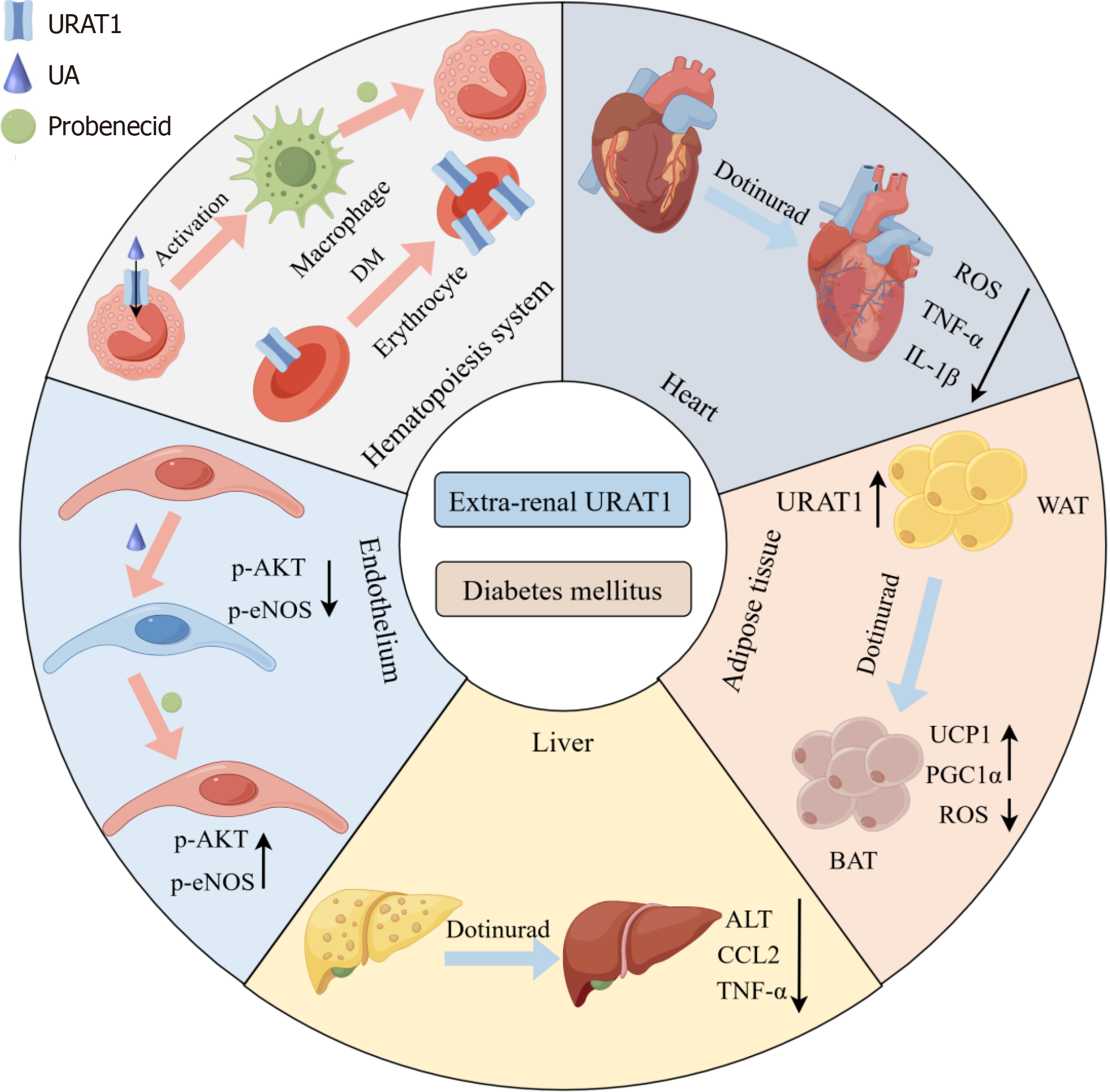Copyright
©The Author(s) 2025.
World J Diabetes. Jul 15, 2025; 16(7): 107673
Published online Jul 15, 2025. doi: 10.4239/wjd.v16.i7.107673
Published online Jul 15, 2025. doi: 10.4239/wjd.v16.i7.107673
Figure 1 Relationship between extra-renal urate transporter-1 and diabetes mellitus.
This figure illustrates the relationship between extra-renal urate transporter-1 (URAT1) and diabetes mellitus. Uric acid (UA) enters macrophages via URAT1, inducing pro-inflammatory polarization – a process suppressed by probenecid, which reduces chronic inflammation in diabetes. Diabetes mellitus upregulates URAT1 expression on erythrocyte membranes. A high-fat diet induces cardiac metabolic dysfunction and insulin resistance, which are mitigated by dotinurad through reduction of oxidative stress and inflammation. Dotinurad also reverses high-fat diet-driven URAT1 upregulation in white adipose tissue, alleviates insulin resistance, promotes white adipose tissue browning, and improves hepatic injury/insulin sensitivity. Additionally, uric acid inhibits endothelial phosphorylated protein kinase B/phosphorylated endothelial nitric oxide synthase, effects that are counteracted by probenecid, thereby restoring endothelial function and preventing diabetic complications. DM: Diabetes mellitus; URAT1: Urate transporter 1; WAT: White adipose tissue; BAT: Brown adipose tissue; UA: Uric acid; p-AKT: Phosphorylated protein kinase B; p-eNOS: Phosphorylated endothelial nitric oxide synthase; ROS: Reactive oxygen species; TNF-α: Tumor necrosis factor-α; IL-1β: Interleukin-1β; UCP1: Uncoupling protein 1; PGC1α: Coactivator 1-alpha; ALT: Alanine aminotransferase; CCL2: Chemokine ligand 2.
- Citation: Yang TS, Du M, Luo LY, Lin L, Luo XL. Extra-renal role of urate transporter-1 in diabetes. World J Diabetes 2025; 16(7): 107673
- URL: https://www.wjgnet.com/1948-9358/full/v16/i7/107673.htm
- DOI: https://dx.doi.org/10.4239/wjd.v16.i7.107673









